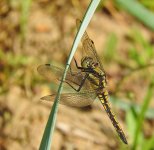kristoffer
Used Register
Hi. I have done a fair share of photography last 10 years and owned a 7d with canon 400 f5.6, Nikon d7000, Olympus OM-D and a few superzooms. Due to lots of work and other hobbies I have been inactive in wildlife photo last years but now I am returning again.
Currently I own a D7100 with Sigma 17-50 f2.8 and I like the combo a lot for family photography.
Now to my question. I need a telelens for insects and birds and there are lots of alternatives. My budget is perhaps £1500. I want it be light weight since my wife wants to be able to carry the combination as well and I want it to close focus. Perhaps I ask too much B
Sigma 150-600 Contemporary is cheap and gives me a lot of reach for birds, making it perhaps the best option for birds but it is heavy and perhaps less suitable for dragonflies due to longer close focus distance?
New Nikon 300mm f4 PF is very light weight and close focusing, but with a TC I lose a lot of IQ I guess? And it is expensive.
New Nikon 80-400 ED VR gives me flexibility and not as heavy but more expensive and less reach then Sigma 150-600.
New Nikon 200-500 has a lovely reach but again very heavy..
What would you recommend? A superzoom like Panasonic FZ1000 is tempting but I just doubt I would like the IQ compared to my D7100.
Thanks
Currently I own a D7100 with Sigma 17-50 f2.8 and I like the combo a lot for family photography.
Now to my question. I need a telelens for insects and birds and there are lots of alternatives. My budget is perhaps £1500. I want it be light weight since my wife wants to be able to carry the combination as well and I want it to close focus. Perhaps I ask too much B
Sigma 150-600 Contemporary is cheap and gives me a lot of reach for birds, making it perhaps the best option for birds but it is heavy and perhaps less suitable for dragonflies due to longer close focus distance?
New Nikon 300mm f4 PF is very light weight and close focusing, but with a TC I lose a lot of IQ I guess? And it is expensive.
New Nikon 80-400 ED VR gives me flexibility and not as heavy but more expensive and less reach then Sigma 150-600.
New Nikon 200-500 has a lovely reach but again very heavy..
What would you recommend? A superzoom like Panasonic FZ1000 is tempting but I just doubt I would like the IQ compared to my D7100.
Thanks




